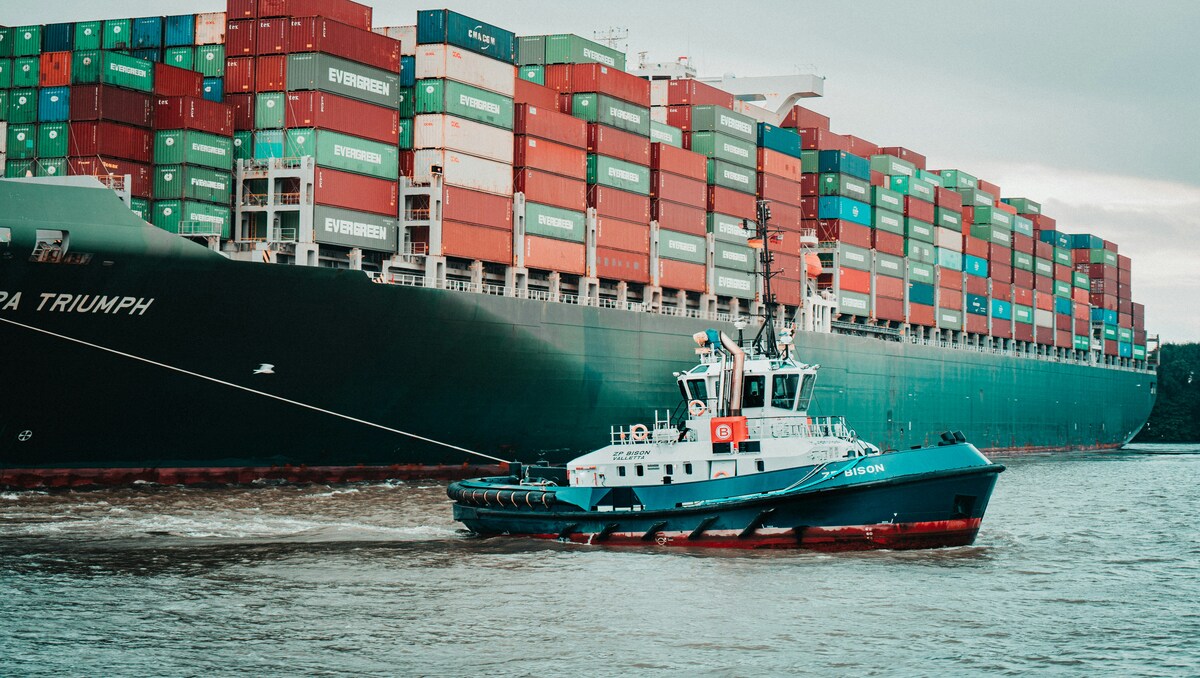It would be like stores not stocking your favourite snacks, foods or smartphones not launching. Impossible to visualize, right? But that nightmare scenario could become reality without the supply chain’s superhero – logistics! Like a conductor directing an orchestra, logistics orchestrates the end-to-end flow of products consumers rely upon.
From raw material origins to store delivery, logistics plays mission control for supply chain management. It aligns the who, what, when and where for turning parts into products and transporting them to eager customers. Without logistics waving the baton, supply chains would screech to a halt. This means like an orchestra with no guidance. Silenced trucks, congested warehouses and cash register lulls would ensue.
At its core, logistics coordinates the transportation rhythms that set the supply chain’s tempo. It composes the intricately timed sequences of planes, trains, ships and trucks. They carry parts and products to the destined facilities. Logistics selects optimal transport routes and modes based on costs, speed, and service level. Tracking this movement is crucial to ensuring on-time delivery – no missed beats! But even with transportation orchestrated, supply chains still need logistics to guide other facets like warehouses.
From storage sites to distribution centers, facilities are strategically placed to buffer inventory like musical rests between melodies. Logistics determines these locations and sets up efficient inventory management inside their facilities. As a result, products are seamlessly transitioned to their next destinations. Just imagine the dissonance that poor warehousing planning could cause!
Additionally, logistics utilizes data, metrics and software to gain whole symphony visibility. With supply chain analytics, it makes informed decisions about:
- Production scheduling
- Inventory levels
- And the shipment modes
By doing so, this will keep costs low and customers happy. That’s a crucial insight for smooth operations!
Essentially, logistics orchestrates the people, trucks, warehouses and information flowing through supply chains. It harmonizes the sections. In this way, customers can manufacture and deliver what they want. A chaotic cacophony would ensue without logistics conducting behind the scenes!
Let’s get into the detailed role of transportation logistics in the supply chain!
Logistics’ Crucial Role in Supply Chain Management
Logistics orchestrates global supply chains like a conductor leads an orchestra. It coordinates smooth end-to-end product flows. From managing transportation and storage to leveraging data, logistics hits the right notes. This optimization enhances overall supply chain performance. Without this pivotal behind-the-scenes role, supply chains will face delays, gridlocks and stock-outs.
Transportation Management: The Rhythm Section
The steady movement of vehicles gives a supply chain its tempo. Trucks, trains, planes and ships transport raw materials and finished products. Logistics serves as the composer of this transportation rhythm section. It coordinates route planning, shipment capacity and network interchanges. Tracking goods in motion allows logistics to redirect flows when needed. This prevents costly interruptions. Sourcing reliable logistics providers enables on-time delivery. Transport requires seamless logistics to keep tempo.
Warehousing Operations: Harmony Holders
Strategic warehouses and distribution centers provide vital inventory storage across supply chains. To enable cost-efficient operations at these sites, logistics makes key decisions. These include facility locations, space layouts and inventory system implementation. Monitoring fluctuating inventory levels also falls into the logistics realm. This keeps stock in tune with orders and demand. Expert logistics conduct minimizes costs while avoiding stock-outs.
Supply Chain Management Visibility: Audio Insights
Logistics utilizes the latest data tools and analytics. This gives clear visibility into precise supply chain efficiency movements end-to-end. In order to identify potential risks, logistics must identify patterns. These might be sourcing issues or shipping delays before escalating. These audio insights also enable smarter demand forecasting and coordinated decision-making between partners. Tight logistics conducting provides a detailed sonic landscape of global distribution network happenings.
Also Read, How To Get Loads Directly From Shippers?
Risk and Contingency: The Backup Support System
Logistics develops contingency plans for unexpected supply chain disruptions. These include natural disasters and backlogs in freight management. A scan of the environment provides early warning signs that can be used to start preemptive mitigation measures. When crises unfold, logistics taps into established response protocols. It also utilizes backup product flows prearranged through logistics provider contacts. Having contingency conduct prevents minor disruptions from becoming major catastrophes.
Sustainability: The Green Conductor
Supply chains require a sustainability conductor amid rising stakeholder concerns. Logistics assesses transport modes, packaging and facilities for finding greener options. These reduce waste and emissions. It also collaborates with suppliers around ethical sourcing audits and compliance certification. Embedding these sustainable improvements helps amplify positive environmental and social impact.
Future Innovation: The Tech Trendsetter
Logistics actively seeks out emerging technologies for potential supply chain applications. New solutions like blockchain, drones and AI are assessed for capabilities and cost-effectiveness. After careful analysis, logistics progressively incorporates beneficial solutions into its operations. Blockchain improves transparency in product flows and payments. Automated drones enhance monitoring of inventories and facilities. And AI-powered analytics unlock deeper insights from data to boost demand forecasting accuracy.
Additionally, reverse logistics leverages technology to optimize returns, reusing products again versus landfilling. Strategic technology adoption increases supply chain sustainability, flexibility, visibility and localization. Logistics conducted at the digital forefront keeps pushing supply chains. This leads to higher levels of innovation and competitive advantage. In response to future consumer demands, this tech trendsetting will prepare supply chains for the future.
Also Read, What is the difference between a public warehouse and a private warehouse?
Conclusion: Let Logistics Orchestrate Supply Chain Success
Logistics hits all the right notes as a supply chain conductor. It’s the master integrator of transport, warehouses, sustainability and innovation. So businesses fulfill more orders on time. Without logistics harmonizing end-to-end flows, supply chains fall out of tune through delays and costs.
Savvy companies amplify logistics to minimize expenses and response times.
Is your supply chain lacking the logistics maestro?
Lading Logistics offers advanced analytics, modeling tools and expansive logistics networks to optimize supply chain coordination.
Contact Lading logistics specialists to evaluate pain points like visibility gaps or capacity restraints. Then leverage custom-crafted logistics solutions for resilient order fulfillment and a competitive edge.
Let Lading orchestrate your supply chain to new heights through strategic logistics conducting!
Also Read, Freight Market Anticipates Turnaround in 2024
FAQs:
What does logistics entail in the context of the supply chain?
Logistics in the supply chain refers to the orchestration of end-to-end product flows. It involves managing transportation, warehousing, data analytics, risk mitigation, sustainability, and adopting emerging technologies for optimal supply chain performance.
How does logistics impact transportation in the supply chain?
Logistics acts as the composer of the transportation rhythm section of the supply chain. It coordinates the movement of trucks, trains, planes, and ships, ensuring efficient route planning, capacity utilization, and on-time delivery by tracking goods in motion.
What role does logistics play in warehousing operations?
Logistics makes crucial decisions in warehousing, including facility locations, space layouts, and inventory system implementation. It monitors inventory levels to keep stock aligned with orders and demand, minimizing costs and avoiding stock-outs through expert logistical planning.
How does logistics contribute to supply chain visibility?
Logistics utilizes data tools and analytics to provide clear visibility into the efficiency of the entire supply chain. This includes identifying patterns, potential risks, and enabling smarter demand forecasting. The insights help coordinate decision-making between supply chain partners.
What is the role of logistics in sustainability within the supply chain?
Logistics serves as the green conductor by assessing transport modes, packaging, and facilities for sustainable options. It collaborates with suppliers on ethical sourcing audits, certification, and adopts emerging technologies to reduce waste and emissions, ensuring positive environmental and social impact.



